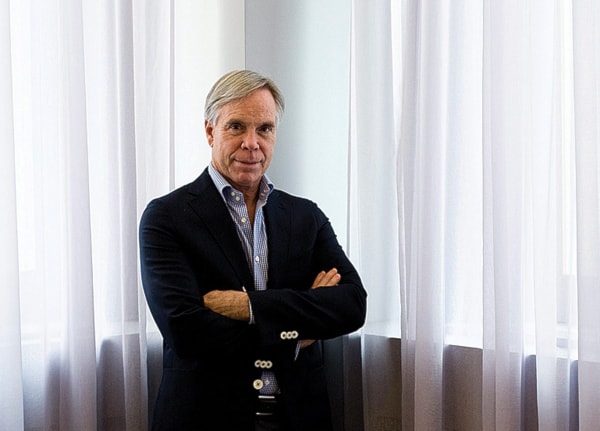TORONTO — Tommy Hilfiger has put his name and signature logo on everything from polo shirts to bedding and fragrances, yet he still has big aspirations to further expand the brand.
“Well, we haven’t done furniture, we haven’t done cars,” said the soft-spoken designer, breaking into a wide smile.
“I want to do tenniswear also,” added Hilfiger, a fan of the sport who watched the recent U.S. Open men’s final.
“We don’t do tenniswear, I’d love to do that sometime.”
Fresh from showcasing men’s and women’s collections at New York Fashion Week, the renowned American designer paid a visit north of the border to mark the opening of shop-in-shop environments at the Bay.
The Canadian retailer announced last month that it had 66 in-store shops offering Tommy Hilfiger menswear. It’s part of an agreement which will see 90 shops in Bay stores across Canada before the end of the year, encompassing everything from denim to tailored sportswear from the Hilfiger brand.
“It’s a big move into the Canadian market,” said Hilfiger, prior to an in-store appearance at the Bay’s flagship store in downtown Toronto, alongside Canadian supermodel Jessica Stam and NHL star Brad Richards.
“We’ve been here for 20 years, and our business has been growing in Canada, but now it’s ready to explode. The Canadian consumer has embraced us, and we think that we have the right image and brand for them.”
Since launching his label in 1985, Hilfiger has carved out his own definitive fashion niche with his colourful range of classic, preppy designs for men, women and kids, along with a host of licensed products including accessories, fragrances and home furnishings.
His recent collections unveiled in the Big Apple followed a similar style trajectory, with brightly-hued, preppy creations inspired by pop culture and pop art, incorporating luxury fabrics from suedes to silks to nylons.
Despite the ongoing turbulence and uncertainty in the economy, Hilfiger has no plans to tinker with his creative formula.
“My philosophy and product has not changed for 25 years — it’s always about giving affordable, wearable fashion to the consumer,” he said. “And now, when we go into luxury products, we want them to be affordable and accessible.”
Hilfiger said the biggest change he’s seen as the industry has evolved is the increased level of competition, notably the influx of discount stores and fashion chains alongside luxury brands.
The widening presence of the online community and social media is also changing the dynamic and interactions with the consumer, he noted.
“I think it always is a challenge to start any kind of business,” he said. “But right now, we have something unique going on, and that is that we have socialization going on through the Internet and through Facebook and Twitter and Tumblr and MySpace.”
“So basically, we’re speaking to the consumer in a whole different way, and I think that’s very meaningful,” he continued.
“If you’re not speaking to the customer through social media then I think you’re not speaking to the customer the right way.”
